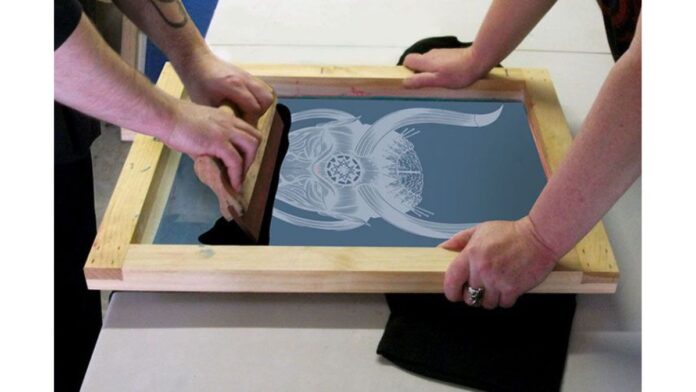Commercial printing uses a variety of technologies to print on various substrates, flexographic printing and screen printing are two of the most popular. This article will look at the key differences between flexo printing and screen printing. Understanding these two printing technologies will help to use the best process for a particular process.
Basics of Flexo Printing
A polymer or elastomer image carrier is typically used in flexo. This may be a:
- Sleeve
- Cylinder
- Plate
To produce the raised design of the final asked print, the image carrier is engraved. An anilox roller is then used to transfer the ink from the inkwell to the image carrier before printing it onto the substrate.
Flexo printing is most commonly associated with applications in flexible plastics and other non-porous materials such as film, labels, foil, and other packaging materials. Flexo printing produces exceptional prints with fine lines and text detail.
Basics of Screen Printing
Screen printing, on the other hand, is a printing process that uses a fine mesh screen to transfer ink onto the printing surface. It is also capable of printing on various materials, including paper, cardboard, plastic, and fabric. However, it is a slower printing process than Flexo, which makes it less suitable for high-volume printing jobs.
Cost and Lead Time:
Screen printing image carriers are typically much more expensive than flexo image carriers, requiring a much higher number of prints to break even. Screen printing, on the other hand, has a longer press run time because the cylinders do not need to be changed as frequently as those in the flexo printing process. In terms of image carrier manufacturing time, screen printing lead time is typically 3-4 times that of flexo.
Substrates:
Screen printing has the disadvantage of being better suited for porous substrates. Because of this, screen printing is best suited for high-detail printing on applications such as magazine covers.
Flexo printing, on the other hand, can print on both porous and non-porous substrates, making it ideal for everything from film to paperboard. When flexo vs. screen in packaging printing is specifically measured, flexo usually wins.
Inks:
Another significant difference between flexo and screen printing is the range of inks that flexo can use. Screen printing issues include a limited number of compatible inks. Flexo printing ink is usually the better choice due to the ease of printing with a wider range of ink. Screen printing requires significantly more ink per print, which can raise printing costs.
Environmental Considerations:
Flexo is commonly regarded as the “greener” option because screen printing has traditionally been associated with solvent-based inks (though water-based ink capabilities are evolving). Flexo printing offers more VOC (volatile organic compound) solutions, and press operations are associated with more environmentally friendly practices.
Quality:
Screen printing was once thought to be best for fine detail and tonal work, but as it evolves, flexo technology is enabling prints with higher resolution and detail, allowing it to move into print jobs that were previously only associated with screen printing. Consider the other benefits and drawbacks of screen printing, as well as the minor (if any) difference in end quality you’ll get with flexo.
The Ultimate Choice: Flexo or Screen Printing
In conclusion, flexography and screen printing are both effective printing techniques with their own unique set of advantages and disadvantages. The best choice for a particular project will depend on the specific needs and requirements of the job, such as the type of material being printed on, the desired print quality, and the required production speed.
The Similarities between flexographic printing and screen printing processes.
- Printing sleeves, cylinders, and plates are all created with both technologies.
- Both can print long-run, high-volume jobs, but flexo is more cost-effective for shorter runs.
- Both are capable of delivering exceptional results.












